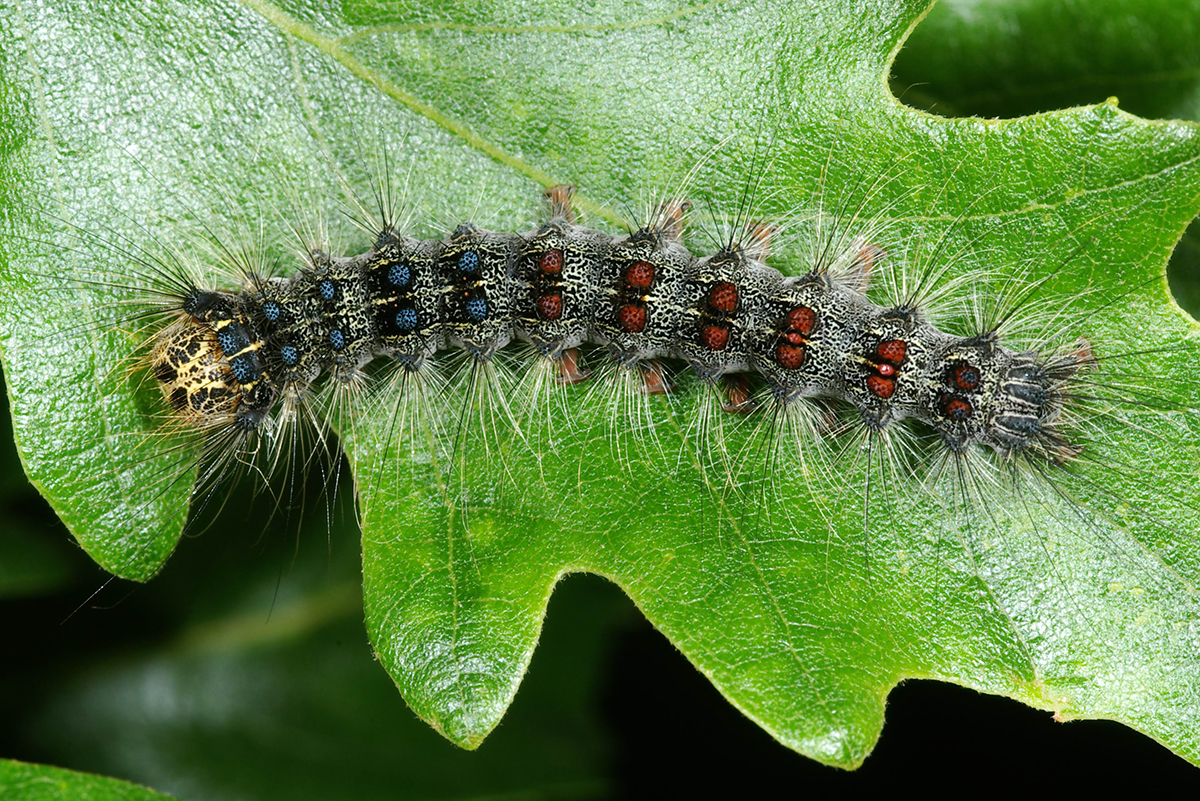New pathogen takes control of gypsy moth populations
By Krishna Ramanujan

A new fungal pathogen is killing gypsy moth caterpillars and crowding out communities of pathogens and parasites that previously destroyed these moth pests.
The findings by Cornell researchers point to an emergent pathogen that is controlling the invasive gypsy moth (Lymantria dispar), a devastating forest pest that feeds on hundreds of plants species but prefers oaks and aspen. Gypsy moths are especially concentrated in the northeastern United States.
A new paper appearing this month in the journal Proceedings of the Royal Society B reports on this useful system for studying disease dynamics. New invasive pathogens have affected many other organisms, most notably a fungus that causes white nose disease in bats and the Batrachochytrium dendrobatidis (Bd) fungus that has wiped out amphibian populations globally.
“Because gypsy moths are a pest, this invasive pathogen is actually having some beneficial impacts,” said Ann Hajek, professor of entomology and lead author of the study. “It’s a good model system for research since it’s killing a pest instead of bats or frogs.”
In years past, gypsy moth caterpillars commonly fell victim to four types of parasitoids, two wasp species and two fly species, each of which lays eggs in the caterpillars. When the eggs hatch, the parasitoid larvae kill their hosts. Gypsy moths – especially those living in large, dense populations – were also often killed by a virus specific to them.
The new fungal pathogen (Entomophaga mamaiga) first showed up in New England in 1989 and has been spreading.
In the study, the researchers examined two sets of data: a 17-year dataset of gypsy moths and the diseases and parasites that infect them, which Hajek has tracked in a state forest in Dryden, New York; and another dataset where samples were collected in 2009 from 66 sites in mid-Atlantic states of Pennsylvania, Virginia, West Virginia and Maryland. Though the Dryden forest site had gypsy moth infestations in low densities, the mid-Atlantic sites had a wide range of densities, including about a quarter with very high densities of moths.
“In all of the sites, the new fungal pathogen was dominating the scene,” said Hajek. “In the past, you would have seen a lot of the virus and the parasitoids but now we basically saw few of those. They were still there, but in the background at low levels.”
The fungus and the parasitoids could rarely both infect a host caterpillar together, because each needs to kill the host on its own time, according to the paper. The virus, on the other hand, could successfully co-infect caterpillars along with the fungus or parasitoids.
“We think this emergent pathogen is killing as many gypsy moths, if not more, than the virus plus parasitoids,” Hajek said.
Hajek hopes this study will raise awareness about emergent pathogens, their detection and what some of the outcomes could be, she said.
Saskya van Nouhuys, Ph.D. ’97, a Cornell visiting associate professor of ecology and evolutionary biology from the University of Helsinki, Finland, is a coauthor.
The study was funded by the United States Department of Agriculture and the Academy of Finland.
Media Contact
Get Cornell news delivered right to your inbox.
Subscribe